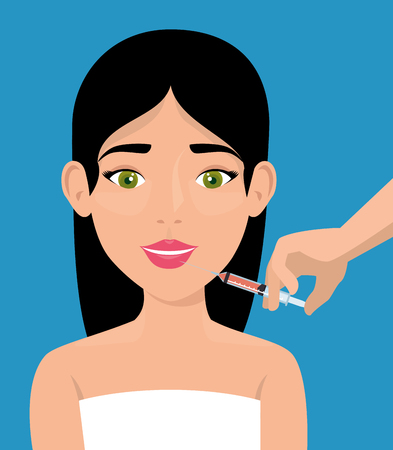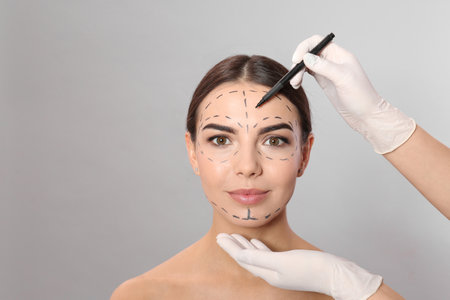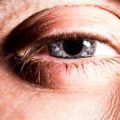Understanding Cheek Fillers
Cheek fillers have become a popular choice for people in the United States who want to enhance their facial features without surgery. These injectable treatments are designed to add volume, lift, and contour to the cheeks, helping to create a more youthful or balanced appearance. Whether you’re interested in subtle enhancement or noticeable definition, cheek fillers offer a flexible solution that can be tailored to your unique face shape.
What Are Cheek Fillers?
Cheek fillers are gel-like substances injected under the skin to restore lost volume or improve facial symmetry. They work by plumping up areas that may have become flat or sunken over time due to aging, weight loss, or genetics. The most common area treated is the mid-face, but fillers can also help define cheekbones and give the face a refreshed look.
Why Do People Choose Cheek Fillers?
- Volume Restoration: Replace volume lost with age.
- Facial Contouring: Enhance natural bone structure and highlight cheekbones.
- Non-Surgical: Offer an alternative to surgical implants or facelifts.
- Quick Results: Immediate improvement with little downtime.
Popular Types of Cheek Fillers Used in the U.S.
| Filler Name | Main Ingredient | FDA Approval Status | Key Features |
|---|---|---|---|
| Juvéderm Voluma XC | Hyaluronic Acid | FDA-Approved | Adds volume, smooth texture, long-lasting (up to 2 years) |
| Restylane Lyft | Hyaluronic Acid | FDA-Approved | Natural look, flexible use for cheeks and hands |
| Sculptra Aesthetic | Poly-L-lactic Acid | FDA-Approved | Gradual collagen stimulation, longer-term results (over 2 years) |
| Radiesse | Calcium Hydroxylapatite | FDA-Approved | Lifts and shapes, stimulates natural collagen production |
Focus on Safety: Choosing FDA-Approved Fillers
The safety of cheek fillers is a top priority for both patients and providers in the U.S. Always choose products that are FDA-approved for facial injections. These products have been thoroughly tested for safety and effectiveness. Make sure your treatment is performed by a licensed, experienced injector who understands facial anatomy and uses sterile techniques to reduce risks such as infection or uneven results.
Your Personalized Approach Starts Here
No two faces are exactly alike. The best cheek filler for you depends on your face shape, desired outcome, and personal preferences. Working with a skilled provider ensures that your treatment plan is customized for natural-looking results that fit your unique features.
2. The Importance of Face Shape Analysis
When it comes to cheek fillers, one size definitely does not fit all. Everyone’s face is unique, and understanding your face shape is the key to achieving natural-looking, flattering results. In the United States, people come from diverse backgrounds, so facial anatomy can vary widely. This makes a personalized approach even more important.
How Facial Anatomy Influences Filler Placement
Facial anatomy includes bones, fat pads, muscles, and skin thickness—all of which affect how cheek fillers look and last. For example, some people have higher or more prominent cheekbones, while others have softer contours. The placement and amount of filler needed will depend on these individual features to avoid an overdone or unnatural appearance.
The Most Common American Face Shapes
In the U.S., you’ll see a variety of face shapes influenced by different ethnicities and genetics. Here are some of the most common face shapes and their characteristics:
| Face Shape | Main Features | Cheek Filler Considerations |
|---|---|---|
| Oval | Balanced proportions with slightly wider cheeks and a gently rounded chin | Add subtle volume to enhance natural symmetry without overfilling |
| Round | Full cheeks, equal width and height, softer jawline | Create definition by contouring the cheekbones for a more sculpted look |
| Square | Strong jawline, broad forehead, minimal curves in the cheeks | Add lift to the upper cheeks to soften angles and balance facial structure |
| Heart-Shaped | Wider forehead, high cheekbones, narrow chin | Focus on mid-cheek volume to support high cheekbones and smooth transitions to the chin area |
| Long (Rectangular) | Face length greater than width, elongated chin or forehead | Add fullness to the cheeks for a more balanced proportion between length and width |
| Diamond | Narrow forehead and chin with wide cheekbones | Enhance volume in the lower cheeks for a softer contour and less angular appearance |
The Personalized Approach: Why It Matters
A skilled provider will always analyze your face shape before recommending any treatment plan. Cheek fillers should work with your natural anatomy to enhance what’s already beautiful about your features—not change them entirely. By understanding both facial structure and personal goals, experts can help you achieve results that are harmonious and tailored just for you.

3. Personalized Filler Strategies for Various Face Shapes
Cheek fillers can truly transform and enhance your natural beauty, but the secret to a stunning result is customizing the treatment to fit your unique face shape. Here’s how cheek fillers are tailored for round, oval, square, heart, and long faces—always with the goal of achieving a natural, balanced look.
Tailored Cheek Filler Recommendations by Face Shape
| Face Shape | Filler Placement Focus | Goal | What to Avoid |
|---|---|---|---|
| Round | Higher on the cheekbones, close to the temples | Add definition and create a more sculpted look | Avoid adding volume to the lower cheeks, which can make the face appear fuller |
| Oval | Evenly along the cheekbones for gentle contouring | Enhance natural symmetry and subtle lift | Avoid excessive filler that can disrupt facial harmony |
| Square | Toward the upper outer cheeks, blending softly into the hairline | Soften strong jawlines and balance facial proportions | Avoid over-filling near the center of the face, which can exaggerate width |
| Heart | Lateral (side) cheeks and midface area under eyes | Create fullness in the lower cheeks to balance a wider forehead and narrow chin | Avoid adding too much volume near the temples or upper cheeks only |
| Long (Rectangular) | Mainly on the apples of the cheeks to add width | Shorten and balance facial length by enhancing cheek prominence horizontally | Avoid high placement that elongates rather than widens the face |
Why Personalization Matters in Cheek Fillers
No two faces are exactly alike. That’s why expert injectors take time to analyze your facial structure before recommending a plan. The right approach highlights your best features while maintaining a refreshed, natural appearance—never overdone.
Your Experience Matters: The Consultation Process
Your provider will discuss your goals, examine your bone structure, and recommend a personalized filler strategy. They’ll also use their knowledge of anatomy and aesthetics to avoid unwanted puffiness or imbalance.
The Bottom Line: Enhancing Your Unique Beauty
The right cheek filler strategy brings out your natural beauty while respecting your face’s individuality. With a personalized approach, you’ll enjoy results that look effortlessly you—just refreshed and confident.
4. Consultation and Communication with Your Provider
When considering cheek fillers for your unique face shape, having an open and honest consultation with a board-certified injector is essential. This step sets the stage for getting results that look natural and fit your personal goals. Here are some helpful tips to make the most of your appointment:
Tips for a Productive Consultation
- Be Clear About Your Goals: Before your appointment, think about what you want to achieve. Do you want more contour, subtle lift, or fuller cheeks? Being specific helps your provider understand your vision.
- Share Inspiration Photos: Bring photos of looks you like—these could be celebrities or before-and-after pictures. Just remember, every face is different, so these photos should serve as inspiration, not an exact template.
- Discuss Face Shape: Talk openly about how your face shape might influence filler placement and outcome. Your provider can explain what will work best for round, oval, square, or heart-shaped faces.
- Ask Questions: Don’t hesitate to ask about the procedure, products used, potential side effects, and recovery. Understanding these details can help you feel more confident in your decision.
Understanding Realistic Outcomes
Your provider will guide you on what’s achievable based on your facial structure and skin quality. Setting realistic expectations is key to satisfaction with your results. Here’s a quick overview of common goals versus realistic outcomes:
| Common Goal | Realistic Outcome |
|---|---|
| Dramatic Volume Increase | Natural-looking enhancement tailored to face shape |
| Perfect Symmetry | Improved balance while maintaining natural asymmetry |
| Permanently Plump Cheeks | Temporary results (typically 12–18 months) |
| No Downtime at All | Mild swelling or bruising possible for a few days |
How to Prepare for Your Consultation
- List any previous treatments: Let your provider know about past fillers or procedures.
- Avoid blood thinners: If possible, avoid aspirin or fish oil supplements a few days before your visit to reduce bruising (check with your doctor first).
- Bring notes: Write down questions or concerns so you don’t forget anything during the appointment.
The Takeaway: Communication Is Key!
The best results come from teamwork between you and your provider. Don’t be shy—share your thoughts and listen to expert advice for a personalized cheek filler experience that enhances your natural beauty.
5. Aftercare and Maintaining Natural Results
Essential Cheek Filler Aftercare Tips
After getting cheek fillers, taking care of your skin is key to achieving natural-looking, long-lasting results. Here’s what you need to know:
| Dos | Donts |
|---|---|
| Apply a cold pack gently to reduce swelling | Don’t touch or massage the treated area for at least 24 hours |
| Keep your head elevated when resting or sleeping | Avoid strenuous exercise for 24-48 hours |
| Stay hydrated and eat nutritious foods | Don’t drink alcohol or take blood thinners unless approved by your provider |
| Follow all instructions from your provider carefully | Avoid excessive sun exposure and tanning beds for a few days |
Maintaining Your New Look
Your results can last anywhere from 6 months to 2 years depending on the type of filler used, your metabolism, and your aftercare routine. To keep your cheeks looking naturally refreshed:
- Schedule regular follow-up appointments: Your provider will let you know when it’s time for a touch-up.
- Use gentle skincare products: Avoid harsh exfoliants or active ingredients like retinol near the injection sites for at least a week.
- Protect your skin from the sun: Use SPF daily to prevent pigment changes or irritation.
- Avoid smoking: Smoking can break down filler faster and affect healing.
What to Expect After Cheek Filler Injections
Mild swelling, redness, or bruising is common for a few days after treatment. You might notice some unevenness as the filler settles—this usually resolves within one to two weeks. If you experience severe pain, significant swelling, or any signs of infection (like fever or pus), contact your provider immediately.
When Will You See Final Results?
You’ll likely see initial improvements right away, but final results appear as swelling goes down—usually within one to two weeks. Remember, personalized care is essential for different face shapes. Always communicate openly with your injector about your goals and any concerns during recovery to ensure you’re happy with your new look.


